#reed cultural museum
Explore tagged Tumblr posts
Text
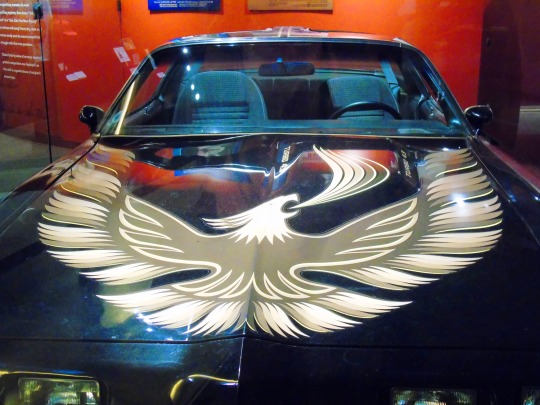
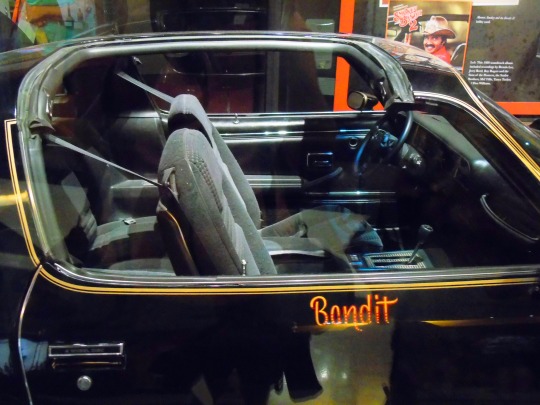
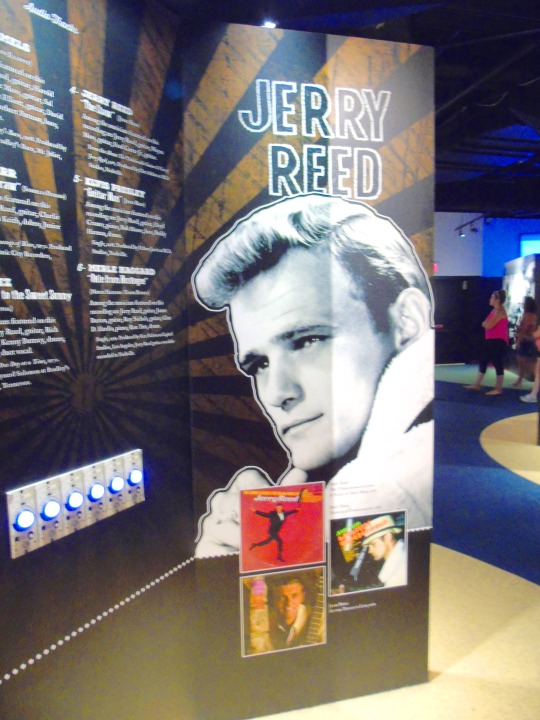
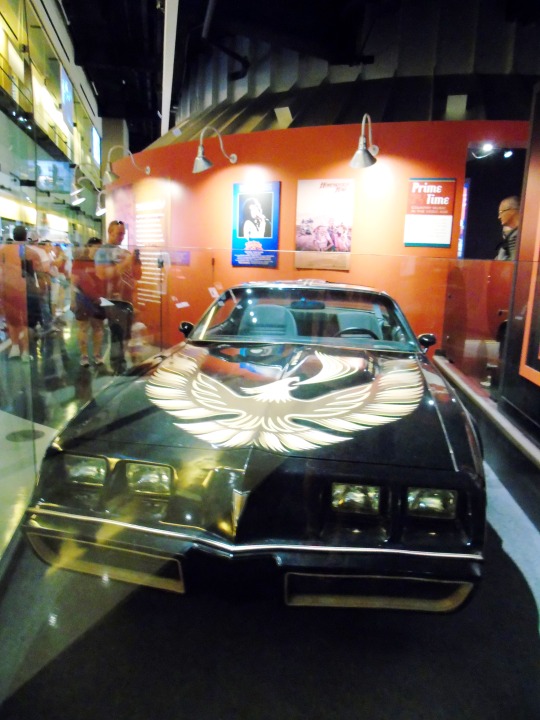
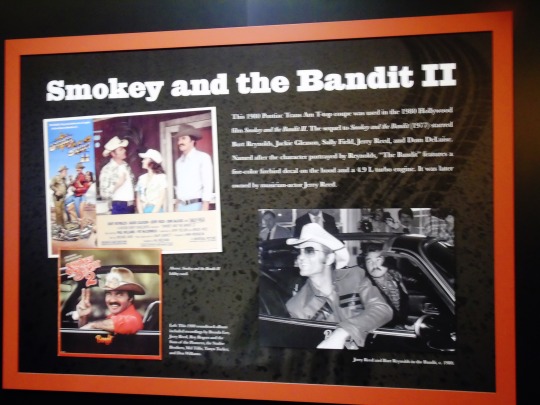
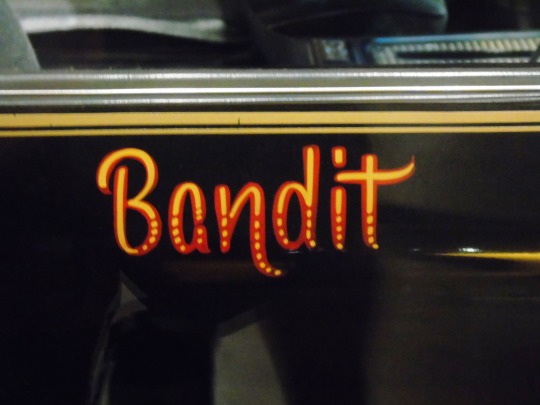
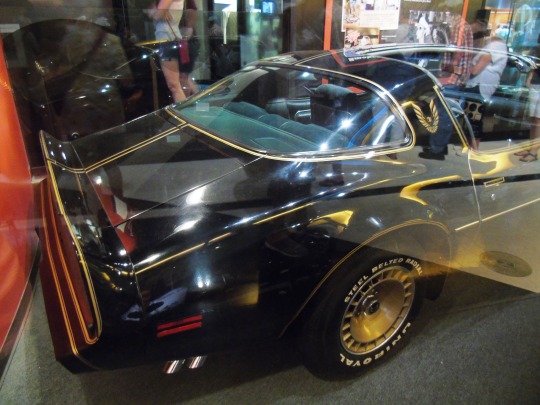
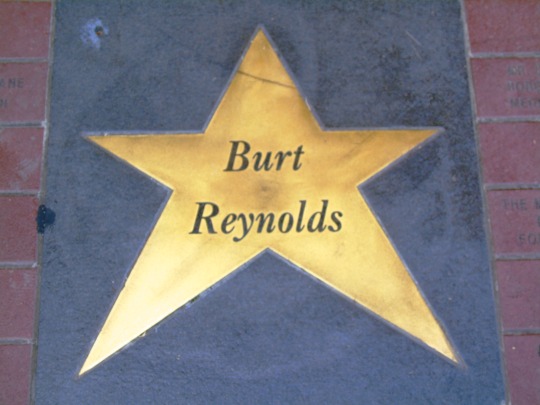
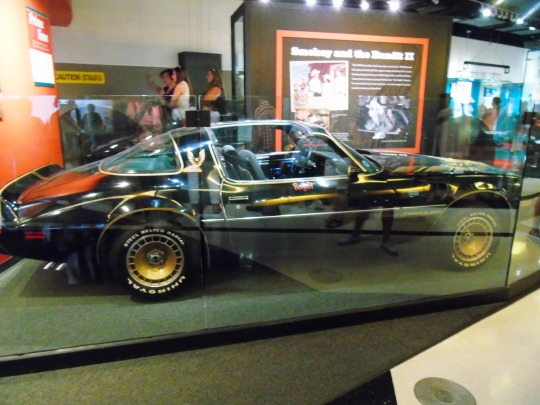
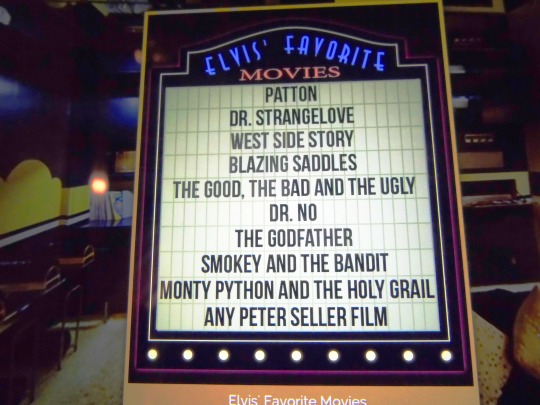
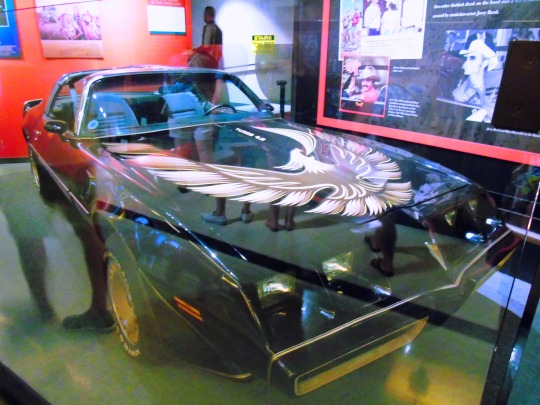
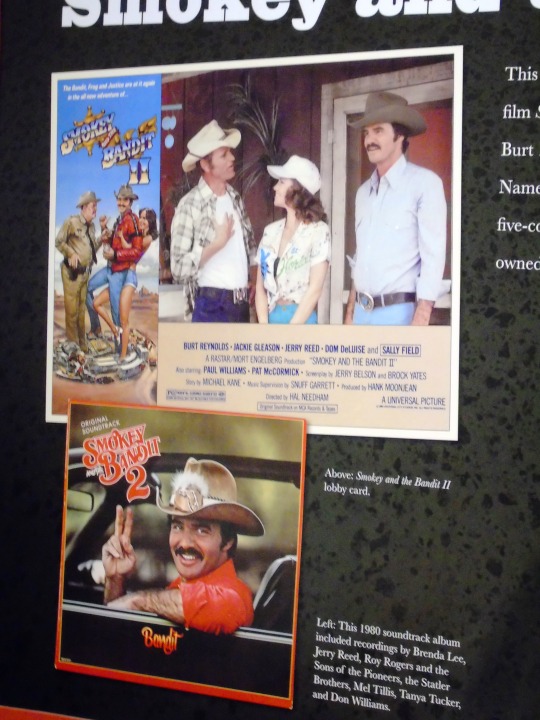
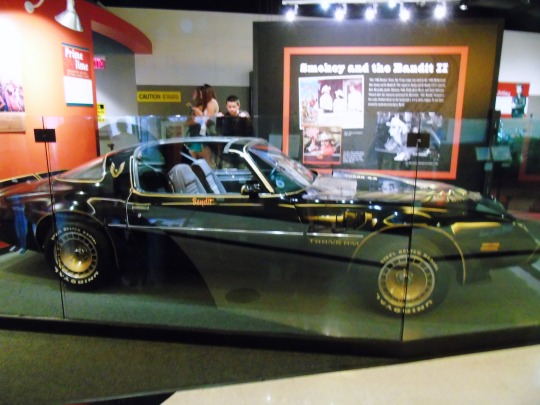
"Smokey and the Bandit” premiered on May 19, 1977.
#1980 Pontiac Firebird Trans Am#Jerry Reed#Graceland#Memphis#travel#Country Music Hall of Fame and Museum#Nashville#original photography#USA#Tennessee#Smokey and the Bandit#premiered#19 May 1977#vacation#Burt Reynolds#Smokey and the Bandit II#car#interior#landmark#tourist attraction#film#movie#one of my brother's favorite movies#and one of his favorite cars#culture#anniversary#US history#Sally Field
12 notes
·
View notes
Photo

Sun Stone
The Aztec Sun Stone (or Calendar Stone) depicts the five consecutive worlds of the sun from Aztec mythology. The stone is not, therefore, in any sense a functioning calendar, but rather it is an elaborately carved solar disk, which for the Aztecs and other Mesoamerican cultures represented rulership. At the top of the stone is a date glyph (13 reed) which represents both the beginning of the present sun, the 5th and final one according to mythology, and the actual date 1427 CE, thereby legitimizing the rule of Itzcoatl (who took power in that year) and creating a bond between the divine and mankind.
The stone was discovered in December 1790 CE in the central plaza of Mexico City and now resides in the National Museum of Anthropology in that city. The richly carved basalt stone was once a part of the architectural complex of the Temple Mayor and measures 3.58 metres in diameter, is 98 centimetres thick, and weighs 25 tons. The stone would originally have been laid flat on the ground and possibly anointed with blood sacrifices. When it was discovered, the stone was lying flat and upside down, perhaps in an attempt to prevent the final cataclysm - the fall of the 5th and final sun - as the Aztec world fell apart following the attack from the Old World.
At the centre of the stone is a representation of either the sun god Tonatiuh (the Day Sun) or Yohualtonatiuh (the Night Sun) or the primordial earth monster Tlaltecuhtli, in the latter case representing the final destruction of the world when the 5th sun fell to earth. The tongue is perhaps also a sacrificial knife and, sticking out, it suggests a thirst for blood and sacrifice. Around the central face at four points are the other four suns which successively replaced each other after the gods Quetzalcoatl and Tezcatlipoca struggled for control of the cosmos until the era of the 5th sun was reached. The suns are known by the day name on which their final destruction occurred. Beginning from the top right there is the first sun Nahui Ocelotl (4 - Jaguar), top left is the second sun Nahui Ehécatl (4 - Wind), bottom left the third sun Nahui Quiáhuitl (4 - Rain) and bottom right is the fourth sun Nahui Atl (4 - Water).
On either side of the central face are two jaguar heads or paws, each clutching a heart, representing the terrestrial realm. The band running immediately around the suns is segmented into the 20 Aztec day-names (hence the Calendar Stone name). Then there is a decorative ring surrounded by another ring depicting symbols which represent turquoise and jade, symbols of the equinoxes and solstices, and the colours of the heavens. The two heads at the bottom centre represent fire serpents, and their bodies run around the perimeter of the stone with each ending in a tail. The four cardinal and the inter-cardinal directions are also indicated with larger and lesser points respectively.
Continue reading...
168 notes
·
View notes
Text
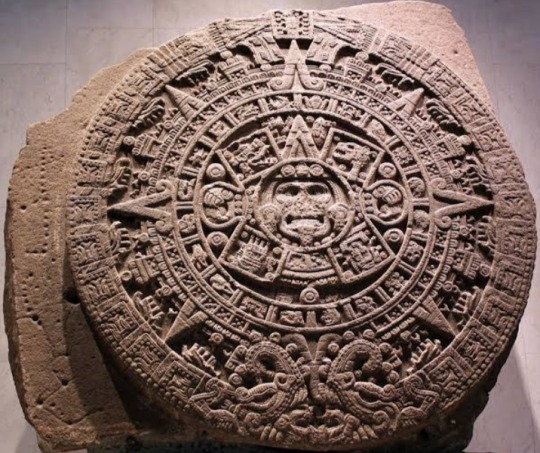
Aztec Sun Stone (Calendar Stone) depicts five consecutive worlds of the sun from Aztec mythology.
Stone is not, therefore, in any sense a functioning calendar, but rather it is an elaborately carved solar disk, which for Aztecs and other Mesoamerican cultures represented rulership.
At the top of the stone is a date glyph (13 reed), which represents both beginning of the present sun, fifth and final one according to mythology, and the actual date 1427 CE, thereby legitimizing the rule of Itzcoatl (who took power in that year) and creating a bond between divine and mankind.
Stone was discovered in December 1790 CE in central plaza of Mexico City. It now resides in National Museum of Anthropology in that city.
The richly carved basalt stone was once a part of the architectural complex of Temple Mayor and measures 3.58m in diameter, is 98cm thick, and weighs 25 tons.
Stone would originally have been laid flat on the ground and possibly anointed with blood sacrifices.
When it was discovered, the stone was lying flat and upside down, perhaps in an attempt to prevent the final cataclysm — fall of fifth and final sun as Aztec world fell apart following the attack from Old World.
At the centre of the stone is a representation of either the sun god Tonatiuh (the Day Sun) or Yohualtonatiuh (the Night Sun) or the primordial earth monster Tlaltecuhtli, in the latter case representing the final destruction of the world when the fifth sun fell to earth.
The tongue is perhaps also a sacrificial knife and, sticking out, it suggests a thirst for blood and sacrifice.
Around the central face at four points are other four suns, which successively replaced each other after gods Quetzalcoatl and Tezcatlipoca struggled for control of the cosmos until the era of the fifth sun was reached.
The suns are known by the day name on which their final destruction occurred.
Beginning from the top right, there is the first sun Nahui Ocelotl (4 - Jaguar), top left is the second sun Nahui Ehécatl (4 - Wind), bottom left the third sun Nahui Quiáhuitl (4 - Rain), and bottom right is the fourth sun Nahui Atl (4 - Water).
On either side of the central face are two jaguar heads or paws, each clutching a heart, representing the terrestrial realm.
The band running immediately around the suns is segmented into the 20 Aztec day-names (hence Calendar Stone name).
Then there is a decorative ring surrounded by another ring depicting symbols, which represent turquoise and jade, symbols of the equinoxes and solstices, and the colours of the heavens.
Two heads at bottom centre represent fire serpents, and their bodies run around perimeter of the stone with each ending in a tail.
Four cardinal and the inter-cardinal directions are also indicated with larger and lesser points respectively.
#Aztec Sun Stone#Calendar Stone#Aztec mythology#carved solar disk#date glyph#National Museum of Anthropology
37 notes
·
View notes
Text
Erin Reed at Erin In The Morning:
This week, bathrooms have become the latest political flashpoint as Reps. Nancy Mace (R-SC), Marjorie Taylor Greene (R-GA), and Speaker Mike Johnson (R-LA) launched an all-out attack on transgender congresswoman Sarah McBride (D-DE). After Johnson confirmed that McBride and all transgender individuals would be banned from using restrooms aligned with their gender identity in the Capitol, Mace decided even that wasn’t enough. On Wednesday, she announced her intention to go further by sponsoring a sweeping bathroom ban on all federal properties—a move that would include government buildings, museums, and major travel hubs like Dulles and Reagan airports. If enacted, such a policy would disrupt travel for tens of thousands of transgender people living, working, and commuting through the D.C. area in advance of World Pride, set to be hosted in the city in June 2025.
The bill, HR10186, was unveiled on Nancy Mace’s Twitter account on Wednesday. It mandates that all bathrooms on federal property be segregated by “biological sex” rather than gender, defining biological sex as the production of eggs or sperm. The bill would force transgender individuals to use bathrooms aligned with their sex assigned at birth or gender-neutral restrooms—a level of restriction that, until now, has been largely confined to schools and public buildings in a limited number of Republican-controlled states.
The scope of this bill is vast. “Federal property” is defined as “any building, land, or other real property owned, leased, or occupied by any department, agency, or instrumentality of the United States.” This includes cultural landmarks such as the Smithsonian Museums, the National Gallery of Art, and the National Zoo, as well as military bases, VA hospitals, and federal government buildings. Perhaps most notably, it extends to major travel hubs like Dulles and Reagan airports in the D.C. area, potentially making travel into and out of the nation’s capital extraordinarily difficult for transgender individuals. Restrictions on major airports like Dulles and Reagan could have significant implications for World Pride, set to take place in Washington, D.C., in 2025. The event, which rotates cities annually, is expected to draw over 3 million visitors from around the globe, making it the largest LGBTQ+ gathering in the city’s history. Transgender travelers, many of whom would pass through these airports, could face the threat of arrest simply for using bathrooms they’ve accessed without issue for years. Beyond the airports, these visitors are likely to explore D.C.’s renowned parks and museums, venues also impacted by the proposed restrictions, creating further obstacles.
[...] It remains unclear whether the bill has the votes to clear both chambers. While similar House measures targeting transgender people have previously passed along party lines only to die in the Senate, the Republican majority now shifts that dynamic.
Bathroom police-obsessed weirdo Rep. Nancy Mace (R-SC) has proposed HR10186, a hateful anti-trans bill that would ban trans people from using bathrooms aligned with their gender identity on federal property.
The GOP has a very narrow majority in the House and a small Senate majority next session.
#119th Congress#Nancy Mace#Transphobia#LGBTQ+#HR10186#Sarah McBride#Anti Trans Extremism#Bathroom Bills#Restroom Ban Laws#Transgender
7 notes
·
View notes
Text
A day at the museum with daddy little one 🌙
plot: Steven decides to take Isaac to the museum dispite his ex manager going to berate him for what Marc did from his fight with a demonic jackal…
a/n: This is the second fic the single dad au of Oscar’s moon knight and im sorry for my Jewish readers if I messed up on certain parts
prev. Next
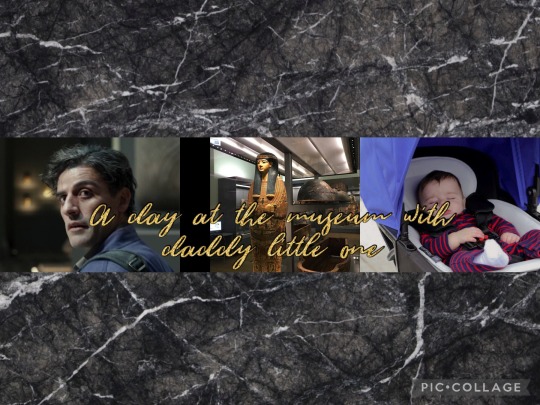
They were bickering about today plans again but this time they keep accidentally switching controlling the body , “Steven you can’t just take Isaac out to the museum now” Marc complained in control of his own body before switching to Steven to clap back his reason and making Isaac laugh at the switching “but Marc I wanted to show him all the Egyptian things and history of how the civilization went through and such” Steven retorts while cleaning up his breakfast and gets isaac clean up from the baby food mess, then looks at his reflection of a grump Marc. “and it’s your fault that you made me to take control of the body and made me look like I destroyed the loo that night!” Marc just made a face at Steven, “you’re still not over that incident!?!? How many fucking times I have to tell you that I’m sorry?!” “AY WILL YOU TWO SHUT UP?! I AM TRYING TO SLEEP HERE IN THE HEADSPACE” Jake shouted he was exhausted from all the people he had to cabie drive around London last night for some high schoolers homecoming dance or something before letting going to do some Moonknight shit. Isaac meanwhile tries grabbing the Star of David around his dad(s) neck while continuing to bounce around in his high chair cooing, “well marc if you don’t like it then you don’t have to be co fronting for today” Steven said putting his foot down and points at his reflection accusingly when taking Isaac out of his high chair and getting him dress in a onesie for the cold autumn month ahead of them in England “ I’m just saying I don’t think it’s wise to take Isaac there okay” Marc looks at his son through the reflection of the fish tank tank “I just want to keep him safe” “we all do Marc…” Steven said reassuring him reminded him that the death of Randell wasn’t his fault. A small coo drought them back to reality as Isaac get put in the stroller while he kicks his tiny little legs up in the air in excitement “all right,all right lad we’re going on a trip are you excited” Steven said gleefully as he booped isaac’s little nose as they head out of the flat and heading to the museum. Dispite having a Jewish background, Steven can’t help but admire the big Christmas tree and decor in the lobby of the museum as he smiles at Isaac who apparently is taking a little nappy in the stroller he was pushing towards the Egyptian exhibit while he takes out a tiny straw cover out of the miniature pyramid of Giza and starts talking to Isaac telling him all about the history of Egypt about their gods /goddesses and its culture. “You see Isaac the Egyptian believed you needed your heart to be judged in the underworld. Only the worthiest would be able to pass through Filed of Reeds , believe it or not i and Marc were there for a bit when we-“ suddenly the rudest woman voice interrupted him “Oy , Stevie is that you you lout?” Steven goes pale and turns to see Donna, he’s ex boss that he and Marc thought that she might be fire due to a lack of empathy or emotion , not to mention Jake wanted to scare her or curse at her back when Steven was working for her. “Hello Donna” he kindly greeted her while trying to avoid her annoying gum chew which steven swears that she’s gonna blow up a bubble and pop it to scare him and wake up Isaac from his stroller nap “ and it’s Steven with a v Donna” Donna who is odlivous to see the baby stares at him with disgusted expression while holding a box of what looks like a Anubis plushie wearing a mini Santa hats on them while putting them down on the gift shop area “if this about rehiring you just to be a bloody tour guide then no your not gonna happen you dult” she’s said to him hurting Steven’s feelings like when he worked in the museum gift shop
“ well actually Donna that’s not the case here . I’m-“ he gets cut off by Donna again while Steven knows that Marc and Jake are trying to hold it together not to take control of the body and slap Donna hard in the face or for Jake see her choke on her own chewing gum as karma “then what is it then? You auditioning for a tour guide again?” She asked “because you aren’t ever going to be one” Steven frown deepened his also heard Isaac starting to stir awake from his mini nappy “well, That’s actually more crushing to hear now because I’m actually here with my baby son.” He replied with a fake smile while trying to sue pressed Marc or even take control over the body as his son rubbed his eyes and looking at them.
Donna looks at the newly awaken baby with a scoff a sign that she didn’t believe him “you’re joking right? Stevie Grant , a 30 year old virgin somehow managed to impregnated a gal and decided to raise the babe?” She remarked as Steven wince “well actually we-i mean uh…“ Donna cut him off again “so who is that lass that made a baby with without knowing they’ve unintentionally made a mistake making you this lad a Mistake …how are you even paying bloody child support when you don’t have a job? ” After hearing that Steven heart broken at that question …he doesn’t know why jake doesn’t tell them who the mother of their son is or why she decided to leave him in the care of them as Isaac started to babble as he was trying to say something to defend his dad(s) from Donna verbal abuse but he fail and starts to cry slowly, “Donna please you making the little lad cry” he started ‘or maybe he’s hungry or need a diaper change?’ Steven thought “besides I already paid half of the amount to fix the loo damages and which by away still wasn’t me” but as usual Donna doesn’t listen and start to berate Steven and at which point calls , little do they know Marc was watching through the glass reflection on a glass coffin clearly getting piss off at Donna and the fact Isaac isn’t liking the situation that Steven is in “damnit” Marc muttered and feeling like he has enough and he decided on what to do.…as Steven was about feel like he was about to have a panic attack, Marc Spector finally gain control of his own body and give Donna a cold expression “I suggest you stop there Donna” Marc said making Donna startled almost choking on her obnoxious gum chewing at Steven’s sudden American accent that just came out. “Excuse me-“ started but gets cut off by Marc “now listen here you woman, you may act like you own this fucking place and treat Steven like he worthless but he is not! I know people like you Donna Gertrude Oswald , people who don’t know that they are treating people with limitations poorly weather it is a sleep condition or someone going through.” He was anger “and don’t you ever call my son a mistake! I don’t have the answer why or who his mother is but no matter what the reason, That baby is my son and you Donna should have been fire from all the things you said and did to me and other coworkers in this museum, so I’m just gonna give you a warning …if you ever, ever do mistreat anyone like this again, I will not hesitate to give a call to HR about how you been abusing your job title” and with that Marc grab the stroller and starts walking the other direction switching back to a baffled Steven unware some guests filmed the whole encounter .
“You really didn’t have to do that Marc” Steven responded after calming down Isaac while sitting on a bench in the exhibit feed him his bottle and looking at the reflection in front of him “but I did and I was pissed at what she said about Isaac” Marc defended himself looking down, but instead of a mini speech from Steven but what he heard was something unexpected “thanks mate, I too didn’t like what she said about Isaac being a mistake” Steven told him “ though what you said will probably not change Donna behavior though it but you defending speech was amazing Marc.” That made Marc happy and Isaac coos reaching for a piece of the exhibit which was a mini figurine of Khonsu depiction in Hieroglyphs but give a hiccup when Isaac gets put back into the stroller and sucks on his pacifier.
After that Steven continues his explaining the stories and history to Isaac and goes to head home when it’s starting to give Isaac a bath and give a call to get him a babysitter for tomorrow night, When Steven check his socials, he froze when he saw a viral video of him (well marc) giving Donna a taste of her own medicine while the caption read “Karen gets exposed and puts in her place”.
tags: @guruan,@forwantofwill,@melodygatesauthor @ominoose
#moon knight#steven grant#marc spector#jake lockley#marvel#moon boys#moonknight#Singledad au#Donna is a bitch to sweet Steven with a V#moondads#moon knight system#moon baby#Son of moon knight
26 notes
·
View notes
Text

Martin Luther King III (October 23, 1957) is a human rights activist, philanthropist & advocate. The oldest living child of civil rights leaders Martin Luther King Jr. and Coretta Scott King, he served as the 4th President of the SCLC (1997-2004).
After he attended The Galloway School, he attended Morehouse College, the same school where his father, grandfather, and great-grandfather attended. He is a member of the Alpha Phi Alpha Fraternity, as was his father. He received his BA in political science from Morehouse College.
On June 9, 1986, he announced his candidacy for the Fulton County Commission, becoming the first of his father’s immediate family to become directly involved in politics. He won the election and was re-elected in 1990, serving (1987-93). He was defeated in a special election for the Chairmanship in 1993.
He opposed the death penalty in 1989, stating “If we believed in an eye for an eye and a tooth for a tooth, most of us would be without eyes and without teeth”. In 1993, he helped found the Estate of Martin Luther King Jr. Inc., the company that manages the license of Martin Luther King Jr.’s image and intellectual property. He remains a commissioner in the company as of 2008. During his service as a commissioner in Fulton County, he expressed appreciation to an officer who potentially saved his mother from harm from a crazed man. In February 2009, he and his wife traveled to India, fifty years after his father and mother made the trip. During his stay in India, he led a delegation, which included John Lewis and Andrew Young. In New Delhi, he visited museums on Mahatma Gandhi’s life and answered questions from students. He denounced the war in Iraq and the Mumbai attacks during a lecture at the Indian Council for Cultural Relations.
He urged Texas to grant a reprieve to death row inmate Rodney Reed in 2019 and urged Alabama to stop the execution of Nathaniel Woods in 2020.
He was among the co-founders of Bounce TV. He serves on the Board of Advisors of Let America Vote, an organization that aims to end voter suppression. #africanhistory365 #africanexcellence #alphaphialpha
6 notes
·
View notes
Text
@kit-just-kit Lord Reed thought he was doing unexpectedly well, given the scale of the shindig - it had now filled out his father’s entire ballroom - and the profoundly dubious band that had been hired from the village to play a volley of hunting songs punctuated by incongruous bouts of waltz or mazurka. ‘I head some tarts from London are coming up to teach us all some modern manners about not wearing breeches to dinner and telling your father to take a taxi to the club instead of riding his horse through traffic,’ one of Sebastian’s schoolfriends was saying as a group of them lounged on kissing chairs and chaise-longues at the edge of the room, downing champagne like water. ‘Your aunt’s idea Sebastian. To bring some culture to the home counties.’ Sebastian smiled blandly, fooling no one. ‘Well you certainly look civilised Freddy,’ someone else piped up. Freddy had come to the costume ball dressed as El Diablo in red tights and a moustache. He leapt up and gave a disastrous tug on his tunic. ‘It’s fantastic isn’t it. I’ll win the best costume prize hands down. How do I look Sebastian?’
The answer to this was ‘perfectly psychotic’. But one does not tell old friends that they are an offence to one’s eyesight, and Sebastian evaded the question by looking over his shoulder and seeing his cousin Jasper fortuitously steaming towards them like a bull to a red handkerchief, dressed as the Archbishop. There was something draped over his arm. ‘I found this in your room, Reed. I thought I told you how important it is to represent the family spirit tonight. This is the last chance to meet a nice girl you might have before another war blows debutante season out of the water.’ Sebastian, in his everyday shirt with the collar open and the tie undone hanging from his neck, got to his feet, the usually meek saucer-shaped eyes under his floppy frond of pale hair currently glittering with menace. ‘Why Jasper? So that I’ll marry her, then go and die in the war and you can pick up the pieces of her broken heart and take over the house? I’m afraid if you want to inherit the Holmwood Estate, you’re going to have to actually locate your testicles and kill me yourself.’ ‘Oh you spoilt little-’ Whether he won or, more likely, lost, the vicious scuffle that ensued was enough to distract Sebastian from the whole nightmare of this evening for long enough for him to forget that he was surrounded by frightened young women whose mothers were slavering for them to dance with him to this gosh-awful band. Jasper was now trying to force the Pierrot costume over his head.
His torture session was interrupted by a susurrus of titters from the neighbourhood of the entranceway. Whilst, as was the code immemorial of the English upper classes, the room was collectively vigilant not to all turn at once and be seen gawping at the spectacle (whatever it was) one at a time, each set of eyes took its turn to glance surreptitiously in the direction of the threshold. Sebastian, on the other hand, did not care for social mores, and looked to see who it was immediately with the dull expression of someone looking at a marble bust in a long line of marble busts at a museum. It was a woman with dark hair piled up on her head in the German style, and a face that shone like the electricity that murmured in the chandelier was being conducted through her. She had full, dark lips and was taller than the gentleman who announced her entrance. And she was the perfect distraction for Sebastian to slip out of his cousin’s grasp and into the courtyard outside. He lit a cigarette and tried unsuccessfully to smoke it by a daintily spurting fountain. He was coughing and squinting when he saw a shape sail across behind the french windows onto the courtyard. He paid it no notice, until at the end of a leisurely pace up the cloister-edge, he turned around to see that the woman with the dark hair and the dark lips had appeared out of nowhere like some kind of colourless, odourless gas. He frowned. Then, eyeing a glint of silver at the periphery of his eye, he picked up the salver from the fountain edge and started inexpertly placing a couple of empty champagne glasses on it. ‘Sorry. I was having a cigarette break, I’ll get back to work.’
4 notes
·
View notes
Text
Distinct but connected- comparing and contrasting Hebitians and Cardassians
One of my goals when writing Hebitians and Cardassians is I wanted them to be cultures with a long, not necessarily violent history prior to colonization under the Cardassian Union, with some level of exchange/relatedness, but also distinct, because I feel it's a dynamic people don't acknowledge as much.
Starting from their environment, Cardassians started as a polytheistic* pastoral community on the southwest of the equatorial contenient on Cardassia Prime, mostly in the desert directly south of the Valley of the Hebitians and the mountains further south of that. Over time, most Cardassians settled in the mountains and subsequently diverged, culturally, from those who retained pastoral life. Pastoral and settled Cardassians maintained necessary trade and kin relations long after, and pastoralism is still common in animal based Cardassian agriculture. The class system that brought the idea of the service class developed after mountain settlement, and the pastoral community is essentially outside of it (a status marked by their family seals having a circle border, instead of the polygonal borders used to designate class). The legal and social status of pastoral Cardassians is complex; other forms of iternancy are restricted, and in some ways the relationship between settled and pastoral Cardassians has degraded. Kin relationships aren't maintained, and the broader social perception often treats pastoralists as a museum exhibit. Additionally, pastoral communities, though they're outside the Cardassian class system, run the spectrum of wealth and severe poverty.
Hebitians, contrastingly, are majority a settled agricultural population** and began that way. It's currently thought Hebitian culture started in the northwest of the Equatorial contenient, either in the Valley of the Hebitians, the delta north of it, or in the Makhå (/ˈmaχɑ/) floodplain to its east. Archeological evidence is limited due to the Cardassian Union being happy to sell artifacts but not to allow drawn out digs from outside academics, and the Occupation signaling a shift where the Union refuses to recognize Hebitians still exist. Exceptions to this are the Thav and Åv, who live in the rather dry Helta Highlands, and a subsect of the Qåmtsu, who lived along the river and Ikhå /ɵχɑ/ delta in house boats. The Thav traditionally were largely fishermen and hunters; their primary contact as an fairly isolated population was the pearl trade. The Åv typically formed middlemen in that trade and engaged in mining and pastoralism.
Hebitians and Cardassians use writing systems derived from the same older writing system, which was originally suited for carving into wood, bone, or stone. The Cardassian version diverged first with the poetic script (which is written with a brush and has a lot of thickness variation), which the computer version seen in the show is based on as a pixel friendly format. A simpler merchant script is also used in school, diaries, and so on, and has little variation in line thickness. The Hebitians have a primary script that's traditionally written with a reed pen, and an older script that's largely fallen out of use that has both logograms and alphabetic elements.
Hebitian and Cardassian gender norms both associate women with metal (in dress and in industry) and being cool headed, while men tend to be seen as emotional/aggressive. Hebitians viewed this work not as "What is suited for women" so much as "men are unsuitable for this", whereas the former sentiment has more weight in Cardassian culture, though the latter also applies, making it so Cardassian women often work in STEM, history, and other jobs with a high importance on being "unbiased". For Hebitians, this has led to a level of favoritism towards women in leadership positions, though not a matriarchy (except for perhaps in the Thav culture).
Both place a high value on large families. However, adoption only has a stigma in Hebitian culture insofar as post-Union social influences, and even then, a citizen of the Union with a Hebitian background is more likely to adopt children. The taboo on adoption for Cardassians is philosophical and religious in nature and stems from how the soul and sin are conceptualized as being related to knowledge. Neither has a nuclear family structure as the norm, but Cardassians solidify family through blood ties more than Hebitians, whose families traditionally are more "unstructured" and built on informal association and blood (the difference being reflected in language as well, with Kardasi having a more specific family vocabulary). These differences in family building and importance of children have led to an "inside/outside" work distinction for female and male Cardassians, respectively. Both also recognize those as who help infants with thermoregulation as part of that infants kin, even if they aren't blood relations.
Both Hebitians and Cardassians have long standing xenophobic cultural tendencies. For Hebitians this reflects their history as a once very powerful family of cultures that controlled around a third of the equatorial contenient and which were known as hard opponents in war, the cultural shift during a long semi-voluntary peacetime and focus on internal politics, and conquest by the Cardassian Union. All three of these eras have had fluctuating cultural attitudes towards outsiders, and different strains of logic behind distrust and fear. For Cardassians today, the xenophobic tendency is tied to the militaristic elements of Cardassian nationalism, especially in their wars with the Klingon Empire and the Federation, and soills over to even affect old trading partners (such as the Ferengi; the word the Federation uses for them comes from Kardasi). The cultural supremacist ideology also has a strong impact. However, it does not come from unfamiliarity in either case. Even when many Hebitian states were isolationist, there were other cultures within them. And in the Cardassian Union (setting aside that Cardassians-as-a-species have many cultures), many planets in the Union had prior occupants that were absorbed into it; the Bajoran system was hardly an anomaly. Even those that were unoccupied possess non-Cardassian residents; people of other species have immigrated to the Union, have loved those from the Union***, and etc.
* Not much is known about older Cardassian religion, not even when mythic figures fell out of worship in favor of deification of the state current in Cardassian civil religion. It's assumed the belief in fate and interest in astrology comes from there, as well as the customs around burial and ancestral veneration. Hebitians make reference to Cardassian religious practices, but these are limited. For example, Hebitians do not use the proper names of Cardassian gods in historical documents- depending on who you ask, this is either because Orallists do not like using the names of foreign gods, or that it was Cardassian custom for others not to use their gods proper names as a matter of respect. Either way, this led to Hebitian documents largely using epithets (such as "lady of mount such and such") to refer to Cardassian gods. It's known the head of the pantheon was a married pair of gods, and that mountains were often deified.
** settled and agricultural does not always mean fields or monocultures. Many Hebitians practice what's called "integrated agriculture", sometimes to the exclusion of fields use such as in the Makhå (/ˈmaχɑ/) floodplain. Integrated agriculture ranges from the creation of environments similar to food forests to the planting and growing of crops integrated into city or even building infrastructure- the latter is where the name derives from.
*** culturally based marriage restrictions in the Union are defined by free and subjugated peoples. Prior to Kardasianization, a Hebitian and a Cardassian being enjoined would be impossible within the Union because Hebitians were classified as a subjugated people, as were Bajorans during the Occupation. A Vulcan and a Cardassian however, would have few legal issues as they are both classified as free people.
21 notes
·
View notes
Text

Charles Erskine Scott Wood, Untitled (On the Snake River), 1906, oil on canvas, 25"x30"
C.E.S. Wood may have been the most influential cultural figure in Portland in the forty years surrounding the turn of the twentieth century. He helped found the Portland Art Museum and was instrumental in making the Multnomah County Library a free and public institution. He secured the services of his friend Olin Warner, a nationally known sculptor, to design the Skidmore Fountain, and his words "Good citizens are the riches of a city" are inscribed at its base. The Portland Rose Festival was his idea. He numbered among his friends Mark Twain, Emma Goldman, John Reed, Clarence Darrow, Lincoln Steffens, Ansel Adams, John Steinbeck, Charlie Chaplin, James J. Hill, and Langston Hughes. Soldier, lawyer, poet, painter, raconteur, bon vivant, politician, free spirit, and Renaissance man, Wood might also be the most interesting man in Oregon history.
via
C.E.S. Wood on the Oregon Encyclopedia
#art#oil painting#snake river#landscape painting#plen air#c.e.s. wood#charles erskine scott wood#portland oregon#oregon#oregon art#eastern oregon
2 notes
·
View notes
Text
Meet Vittoria Assad (Cookie Run Sugar Linkage Self Insert)
(A gift for @sam-rexian)
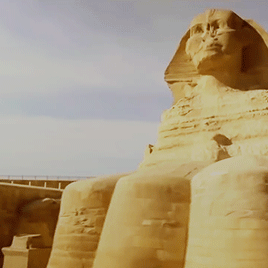
Y/N, a local of Bakerton, is visiting the Natural History museum on a hot sunny day. But not just that- the museum has gotten a new exhibit dedicated to the magical and mysterious culture that is Ancient Egypt. “I think it’s time to head inside.” Y/N replies as they finish up their breakfast and enter the museum, ticket in hand.
As Y/N enters the gorgeous building, they see various citizens of Bakerton looking at exhibits. Y/N then hands over their ticket to the receptionist, and as they enter the museum… they’re jumpscared by a little girl who appears to be in elementary school- wearing what appears to be toilet paper to replicate bandages. “Hahaha! You have awoken the so-called Mummy Queen!” She begins, laughing evilly before going back to her normal demeanor and adjusting her baseball cap. “I’m kidding! Come inside!” She says, taking a picture of what appears to be an unearthed sarcophagus.
“You must really love Egyptian culture, right?” Y/N asks the little girl, who places her phone back in her pocket. “Yeah! My dad’s side of the family comes from the Middle East, which is close to Egypt. More specifically, Turkey. And my first name, Vittoria, is of Italian descent- aka my mom’s side of the family.” She explains, but not before Y/N stops and gazes at a gorgeous amulet beneath a glass case, her “bandages” now taken off.
“Apparently, the super important guys used these to protect their vessel when they crossed over into the afterlife.” Vittoria explains to Y/N. “Hey, Vittoria. What is this?” The latter asks as they point to a diagram that shows someone getting… bandaged? “That is the mummification process. They used special techniques to prepare the body for the journey to the field of reeds. Isn’t it wild? It helped make sure the body was preserved and prepared for the trials ahead of them after death.” She informs.
Suddenly, a voice comes from a nearby display case. “Ooooooo…!” It replies, as if beckoning Y/N and Vittoria over to the display. “What was that?! Is the pharaoh’s curse real?!” Y/N, in a panicked state, exclaims as they look around. “It’s not the curse. I think you’ve found my little buddy!” Vittoria replies as she whistles. The moment she whistles, a small figurine- about the size of an amulet or so, peeks out and hops into the girl’s hands. “Hello!” She says.
“Fettie, I see you’ve met Y/N!” Vittoria says as she places her tiny cookie friend on her shoulder. “Wait. Who’s Fettuccine? I’ve never heard of anyone called that!” Y/N says as they approach Vittoria. “This is Fettuccine! I like to call her Fettie for short. Isn’t she adorable? She’s like this mummy cookie! I met her while I was in my dad’s archaeology study.” She explains further. “Hey, Fettuccine.” Y/N replies in a friendly tone. The two then go off to explore the museum, with Y/N not realizing they’re going on an adventure they never expected…
The End
#fanfic#one shot#self insert#ocs#project link up#Plu#cookie run sugar linkage#CRSL#cookie run kingdom#crk#cookie run#fettuccine cookie
10 notes
·
View notes
Text
Tokyo Arts and Space Annual Report 2022

トーキョーアーツアンドスペース アニュアル 2022
編集 杉本勝彦、トーキョーアーツアンドスペース(市川亜木子、関 朝子、武智あさぎ)
インタビュー 内田伸一 翻訳 ロバート・リード(プロフィールを除く)、トーキョーアーツアンドスペース
インタビュー撮影 トヤマタクロウ
撮影 大野隆介、加藤 健、佐藤 基、髙橋健治、トヤマタクロウ、中川 周、丸尾隆一、 トーキョーアーツアンドスペース
デザイン 加瀬 透、本田千尋 印刷 株式会社シナノパブリッシングプレス 発行 公益財団法人東京都歴史文化財団東京都現代美術館 トーキョーアーツアンドスペース事業課 東京都江東区三好4-1-1
発行日 2023年6 月16日
非売品・転売禁止
Tokyo Arts and Space Annual Report 2022
Editors SUGIMOTO Katsuhiko, Tokyo Arts and Space (ICHIKAWA Akiko, SEKI Asako, TAKECHI Asagi)
Interviewer UCHIDA Shinichi
Translation Robert REED (except artist profiles), Tokyo Arts and Space
Interview Photos TOYAMA Takuroh
Photos KATO Ken, MARUO Ryuichi, OHNO Ryusuke, SATO Motoi, TAKAHASHI Kenji, TOYAMA Takuroh, NAKAGAWA Shu, Tokyo Arts and Space
Design KASE Toru, HONDA Chihiro
Printing SHINANO PUBLISHING PRESS CO., LTD
Published by Tokyo Arts and Space, Museum of Contemporary Art Tokyo, Tokyo Metropolitan Foundation for History and Culture 4-1-1 Miyoshi, Koto-ku, Tokyo Publication Date: June 16, 2023
The sale or resale of this publication is strictly prohibited.
©2023 Tokyo Arts and Space, Museum of Contemporary Art Tokyo, Tokyo Metropolitan Foundation for History and Culture
お問い合わせ|Inquiries
URL www.tokyoartsandspace.jp/ Facebook Tokyo Arts and Space Twitter [日本語] @tokas_ jp [English] @tokas_en
2 notes
·
View notes
Text





Burt Reynolds died on September 6, 2018.
#Burt Reynolds#died#death#6 September 2018#anniversary#US history#movie#film#travel#original photography#vacation#tourist attraction#landmark#architecture#cityscape#Graceland#Memphis#Country Music Hall of Fame and Museum#1980 Pontiac Firebird Trans Am Turbo 4.9L#Smokey and the Bandit 2#Nashville#summer 2016#Tennessee#culture#car#star#Sally Field#actor#Jerry Reed
1 note
·
View note
Text
European Impacts on Ancient Inca Weaving

An expert on Peruvian history and culture, Joseph H. Fabish has lectured extensively on Inca weaving. Having presented at institutions such as the Institute of Andean Studies and the Textile Museum of Southern California, Joseph Fabish lectured primarily on the weaving traditions of the Huamachuco people.
The Inca Empire and its weaving tradition dissipated sometime after the Europeans colonized ancient Peru. Historians believe the end of the Inca Empire happened in the early 16th century when Spanish explorers colonized the region. Colonial rule overtook the quadripartite state formerly known as Tawantinsuyu, or Land of Four Corners, in the next century.
As a part of the cultural colonization that took place, the Aclla Wasi (state master weavers) came under the magnifying glass of Spanish settlers who realized the weaving tradition was interconnected with Inca identity and belief system. In response, the Spanish settlers attacked this tradition, prohibiting Andean weavers from practicing sacred textile practices.
Instead, the settlers made master weavers reproduce textiles but for European tastes. Out of this transformation, the Obrajes system developed, which produced textiles and materials characterized as low quality for people who belonged to the working classes. More importantly, treadle looms and reeds were equipment introduced into weaving, and weavers began to use material derived from silk, sheep, and metallic threads.
As a result of Spanish influences such as the Incas being removed from overseeing weaving practices, the quality of the textiles declined. This downfall was primarily because the traditions under which textiles were made previous to colonization were no longer practiced. However, many indigenous people still held onto the tradition of weaving using alpaca and vicuna fibers with metallic fibers interwoven into the material. Some historians believe this style was a statement of resistance to colonial rule.
2 notes
·
View notes
Text



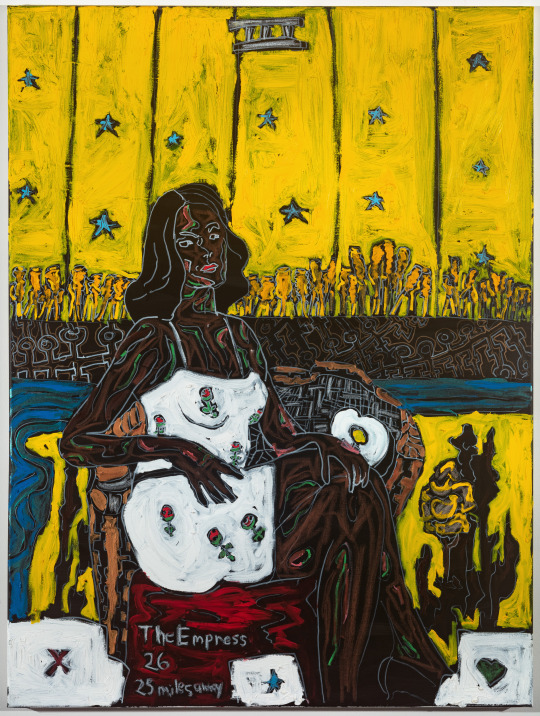

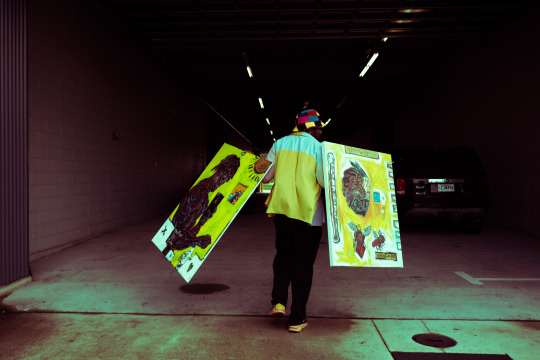
JOHN ISIAH WALTON is a New Orleans artist whose neo-expressionist works are internationally recognized for their commentary on race, class, identity, and current events through his irreverent, frenetic and sometimes absurdist style. His art has been on show at the Art Lab Akiba (Tokyo, Japan); the Atlanta Contemporary Biennial (Atlanta, Georgia); the Ogden Museum of Southern Art (New Orleans, Louisiana); the permanent collection of the New Orleans Museum of Art; the Ohr-O’Keefe Museum of Art (Biloxi, Mississippi); P339 (Brooklyn, New York); and more. His residencies include the Macedonia Institute (Chatham, New York) and the Joan Mitchell Center (New Orleans). In 2022, he will showcase work in Tel Aviv, Israel.
Influenced by internet aesthetics, Black identity, pop culture, and Louisiana history, Walton’s subjects are often unconventional and sometimes shocking. In the tradition of Basquiat, his work frequently has hidden meanings and symbols, and his choppy brushwork endows the work with the energy and intensity that the artist is known for. Rooted in concern about the social, economic, political, and cultural structures at play in contemporary life, Walton’s best-known series sometimes encourage discomfort.
His breakthrough exhibit was 2015’s “Beaucoup Humidity,” curated by the legendary Diego Cortez. A behind-the-scenes exploration of service industry workers of his hometown, the series exemplifies Walton’s signature wit and personal experience to depict the New Orleans underbelly hidden from tourists. The series was preceded by 2012’s “Zulu Portraits,” which featured post-colonial portraiture of Black and white political leaders in blackface to remind us to deconstruct or disentangle an errant white American history. The title is a reference to the Zulu Social Aid & Pleasure Club parade krewe of New Orleans.
In 2016, Walton tackled the carceral state in a series featuring inmates of the Louisiana State Penitentiary known as Angola, portrayed through portraits of bulls and bullfighters. The series aims to examine our complacency with incarceration, and represents a more subdued but no less subversive approach to critical social commentary. The “Black Paintings,” a series Walton began in 2017, address issues of identity including visibility and invisibility, presence and absence, figure, and void. On canvases painted black, layers of neon-hued acrylic and oil stick depict scenes ranging from the mundane to the controversial.
Walton was the first African-American member of the artist collective The Front and a founding member of both The Level Artist Collective and the Second Story Gallery. He has lectured about his work to the graduate program at UNC, Chapel Hill. He attended St. Augustine High School. (1999-2002) and graduated from Sarah T. Reed High School (2003). Walton received an AA degree in 2012 from Delgado College, New Orleans.
#john isiah walton#oil painting#oil on canvas#contemporary art#artist#jonathan ferrara gallery#jfg artist
4 notes
·
View notes
Text
The Central Andean culture area is a key region in western South America.
Central Andean dry puna
The Central Andean dry puna is an ecoregion in the montane grasslands and shrublands biome, located in the Andean Altiplano in South America. It is a part of the Puna grassland.
Central Andean dry puna - Wikipedia
Central Andean puna
The Central Andean puna is a montane grasslands and shrublands ecoregion in the Andes of southern Peru, Bolivia, and northern Argentina. Wikipedia
Area: 161.4 km²
Central Andean puna - Wikipedia
Music in the Ancient Andes
Detailed accounts written by Spanish chroniclers of the sixteenth century emphasize the importance of music and dance in Inca celebrations and festivals. They describe musical instruments such as flutes and panpipes made of bone, reed, and fired clay, shell trumpets called pututos, ceramic whistles, ocarinas, trumpets, and drums, as well as rattles made with a variety of materials. These objects are sometimes portrayed as delicate instruments played with solemnity and virtuosity, sometimes as instruments generating meaningless sounds during pagan or diabolic rituals. The Incas and their predecessors used music to communicate with the ancestors, heal the sick, and bury the dead. Music followed them in war and pilgrimages, perhaps providing them with supernatural power.
Music in the Ancient Andes | Essay | The Metropolitan Museum of Art | Heilbrunn Timeline of Art History (metmuseum.org)
Painting from groundbreaking artist and rare Andean drum among newly acquired art at CMA

Painted Drum,500–1000. Central Andes, Middle Horizon, North Coast? Animal hide, gesso, wooden slats, pigment; overall: 27 x28 x 12 cm (10 5/8 x 11 x 4 3/4 in.). The Cleveland Museum of Art, Severance and Greta Millikin Purchase Fund, 2022.37.
CMA acquires rare art, painting from groundbreaking artist (news5cleveland.com)

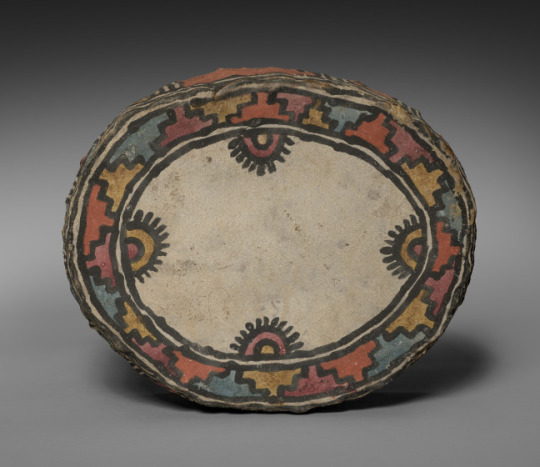
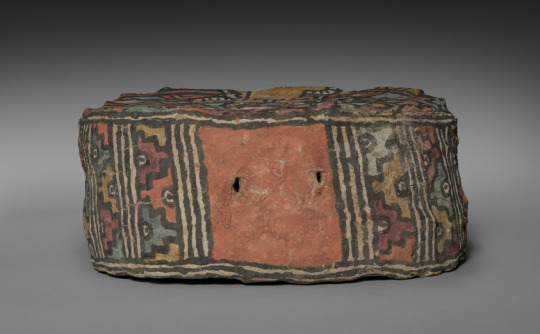
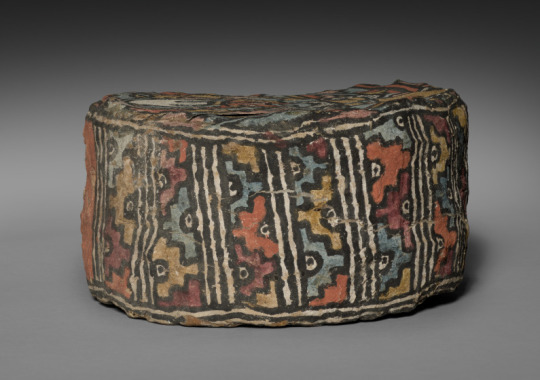

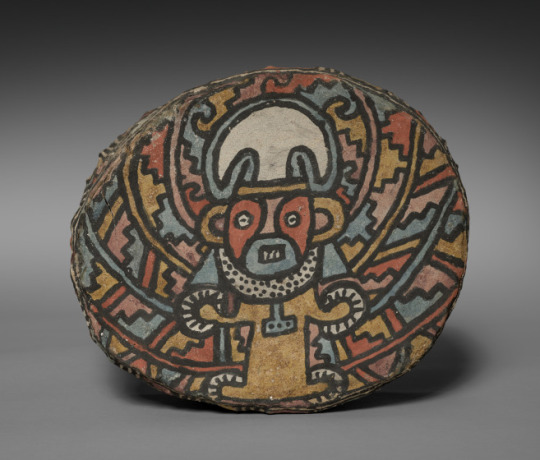
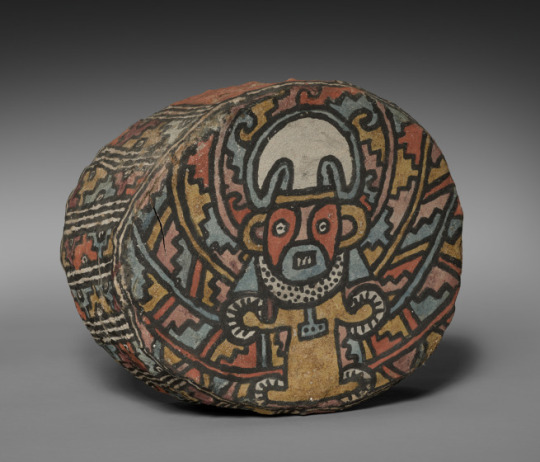
~ Painted Drum.
Date: A.D. 500–1000
Place of origin: Central Andes, Middle Horizon, North Coast
Medium: Animal hide, gesso, wooden slats, pigment.
1K notes
·
View notes
Photo

Dark Wood Tarot Dark Wood Tarot Cards – June 8, 2020 by Sasha Graham (Author), Abigail Larson (Author) --Brand New-- Entering the Wood Is Easy. Leaving Is a Different Matter. How Will You Emerge? Dare to enter the dark wood and discover your shadow self with this enthralling Rider-Waite-Smith-style deck. As you take on the role of a witch entering the wood, each magnificent card becomes a vision of deep wisdom that guides you to a richer understanding of yourself. Examine secret desires and shadowy dreams. Explore the unknown recesses of your psyche. This captivating deck and full-color companion book lead you through the darkness and into the light that reflects your hidden talents and personal power. Dare to enter the dark wood and discover your shadow self with this enthralling Rider-Waite-Smith-style deck. As you take on the role of a witch entering the wood, you'll find each card becomes a "vision" of legends (wands), fears (swords), animals (cups), and the natural world (pentacles). These visions offer you deep wisdom, providing a richer and fuller understanding of yourself. Examine your secret desires, your shadowy dreams, and the unknown recesses of your psyche. This deck is the key to your shadow side―the key to a quest through darkness and into the light that reflects your hidden talents and personal power. Review "Take a walk through the Dark Wood Tarot, and you'll discover a portal to another world, unlike anything you've seen before. This is a tarot fairytale rich with symbolism, story, intrigue, and shadowy things. Sasha Graham's masterful storytelling is the perfect backdrop to Abigail Larson's art. Dark Wood Tarot isn't an ordinary deck―it's an experience."―Theresa Reed, author of The Tarot Coloring Book and coauthor of Tarot For Troubled Times About the Author Sasha Graham teaches tarot classes and produces tarot events at New York City's premier cultural institutions, including the Metropolitan Museum of Art. She has appeared on film, television, radio, and in the New York Times. She lives in New York City and can be found online at http://www.sashagraham.com. Abigail Larson is an illustrator who works primarily with pencil, ink, watercolor, and Photoshop, creating unique, mixed-media art. Her work has been shown extensively throughout America from NYC to Los Angeles, as well as galleries in London, Paris, and Madrid. Abigail's illustrations have been featured in various publications, including Spectrum Fantastic Art, Art Fundamentals, The Graphic Canon of Children's Literature, Rue Morgue, and Digital Artist. She has also worked with many companies, including DC/Vertigo, IDW, Titan Comics, Pelican Books, 3Dtotal, Syfy, and Sideshow Collectibles. Product details Cards: 304 pages Publisher: Llewellyn Publications (June 8, 2020) Language: English ISBN-10: 0738759309 ISBN-13: 9780738759302 Product Dimensions: 5.7 x 0.4 x 8.4 inches Shipping Weight: 1.9 pounds
0 notes